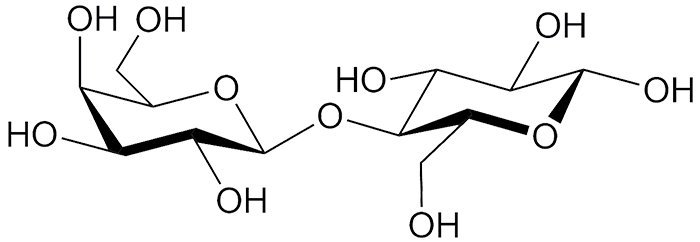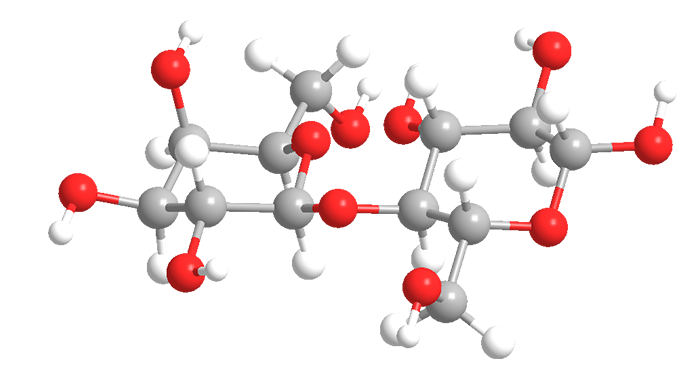

When the term “lactose” comes up these days, many people automatically connect it to “intolerance”. That’s because milk is rich in the sugar D-(+)-lactose (hence its common name “milk sugar”); as people age and consume less milk, they produce less lactase, the enzyme that the body uses to decompose lactose. Microorganisms in the gut feed on lactose and emit gases that can precipitate gastrointestinal problems such as bloating and diarrhea.
F. Bartolletti discovered lactose in milk in 1619; C. W. Scheele identified it as a sugar in 1780. It is used as a component of infant formula, as a carrier for aromas in foods, and as a filler in drug formulations. A Molecule of the Week reader reports that lactose is not fermented by beer-brewing yeasts and is added to some beers such as cream stout to give them a richer mouth feel.

Learn more about this molecule from CAS, the most authoritative and comprehensive source for chemical information.
Molecule of the Week needs your suggestions!
If your favorite molecule is not in our archive, please send us a message. The molecule can be notable for its current or historical importance or for any quirky reason. Thank you!
Stay Ahead of the Chemistry Curve
Learn how ACS can help you stay ahead in the world of chemistry.

